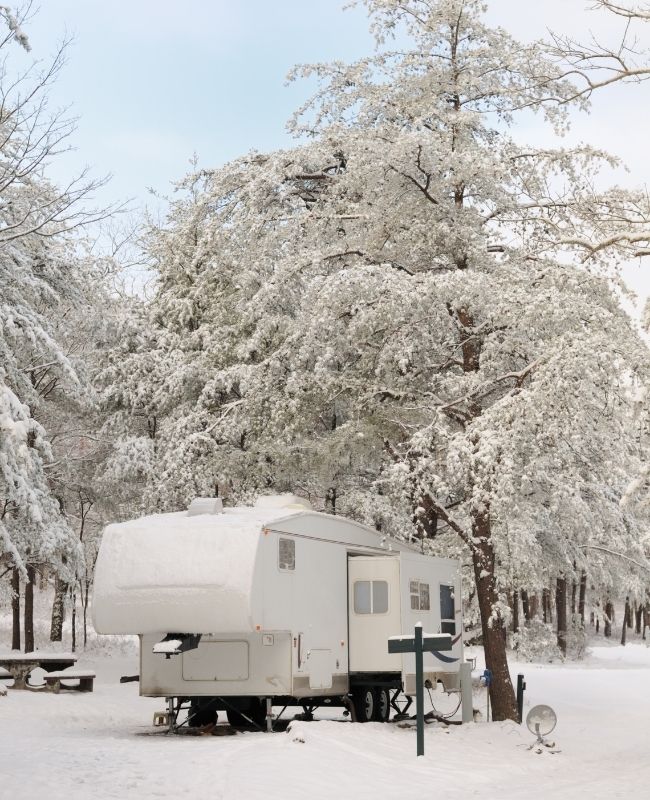Traveling with Ankylosing Spondylitis: Traveling with Disabilities
Ankylosing spondylitis (AS) is a form of arthritis that primarily affects the spine. AS can cause pain and stiffness in the lower back and hips, and over time, the vertebrae in the spine can fuse together. This fusion can lead to a hunched-over posture. Although there is no cure for AS, there are treatments that can help relieve symptoms and prevent progression of the disease. FOLLOW US ON FACEBOOK!
With proper treatment, people with AS can lead normal, active lives. For many people with AS, this includes traveling. Traveling with Ankylosing Spondylitis can be challenging. The good news is that with some careful planning you can still have a great trip.
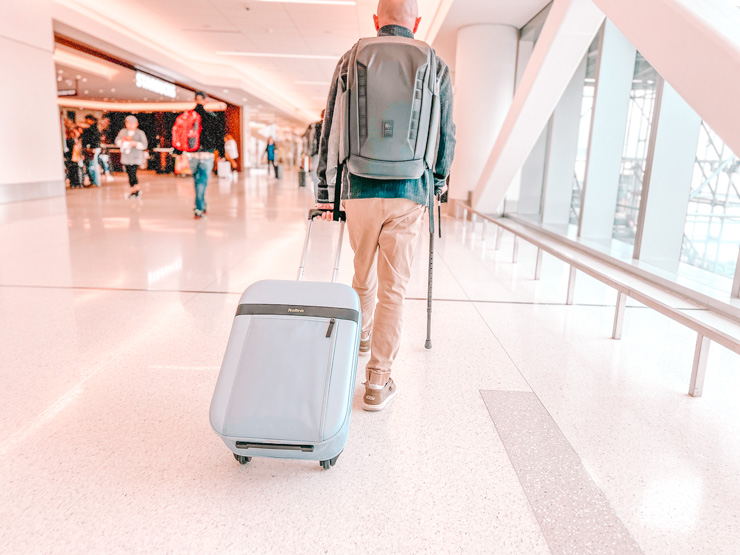
My Personal AS Story
My AS journey started after I had knee surgery. Nothing too crazy. I had played competitive sports my entire life and just needed to get some stuff cleaned up. I was playing hockey at the time, and I had scheduled my surgery to coincide with our off season.
November 2003 came and surgery went well. My knee was healing and I was on schedule to resume playing hockey in March of 2004. I had played in a couple of pick-up games, and everything was as good as new. Then the week before Easter happened. I had an upper respiratory infection that I was fighting. And as guys tend to do, I didn’t go to the doctor. On Easter morning, my wife took the kids to church, and I thought I was staying home. Little did I know that my mom was on her way to drag me to the ER.
When we arrived at the ER, I was told that I was dehydrated. They pumped me full of fluids and medications and sent me on my way. I’m back to feeling great in no time and start playing hockey again. After my first game back, my knee swelled up HUGE. That landed me back at the orthopedic surgeon again. He drained the fluid off my knee and said it didn’t look like an infection. We chalked it up to overdoing it a little and not giving my knee enough rest. I tend to do that! I ended up back in his office four more times in 5 weeks to get that same knee drained. He was stumped on what was causing all of this inflammation.
My orthopedic doctor finally walked me down to a rheumatologist that was in the same office. He explained to her that he was stumped on what was causing all the inflammation, and he thought that maybe she could help find an answer. If my doctor hadn’t taken this extra step, there is no telling how much unnecessary pain and suffering I would have had to go through. She could have easily said I am not currently taking new patients, as she wasn’t at the time. But she literally put her afternoon on hold just to check me out.
My rheumatologist ordered all kinds of tests and took a very detailed medical history and family medical history. It took about 6 months to get a firm diagnosis. So my journey to diagnosis was rather quick one. And for that I am thankful. I am now writing for WebMD.
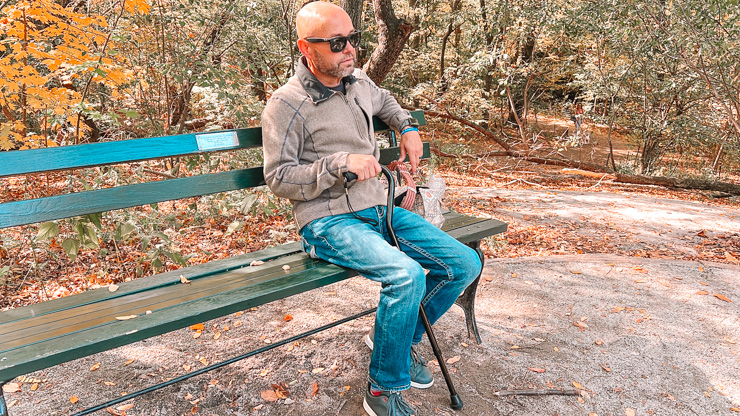
Challenges of Traveling with AS
There are several challenges that people with AS may face when traveling. These challenges include:
• Finding a comfortable place to sit or sleep: Depending on the severity of your AS, you may have difficulty finding a comfortable position to sit or sleep. This can be especially challenging when flying or taking long car trips. Consider bringing a neck pillow or lumbar support pillow to use on the plane or in the car. You may also want to request an aisle seat so that you can get up and stretch your legs frequently. If you’re staying in a hotel, ask for a room with a firm bed. You may also want to bring a small heating pad to use on your back or hips if you experience pain at night. I will also ask for an extra pillow that I use a knee pillow. This helps me with hip pain when I sleep.
• Handling changes in weather: Weather changes can trigger flares or make existing pain worse. Be sure to pack appropriate clothing for the climate you’ll be visiting. If you’re traveling to a cold climate, dress in layers so that you can remove clothing if you start to feel too warm. If you’re traveling to a hot climate, pack loose-fitting clothing made of breathable fabric such as cotton. You may also want to bring along sunscreen and lip balm with SPF 30 or higher to protect your skin from the sun’s harmful rays. And don’t forget to drink plenty of fluids—aim for eight glasses of water per day—to stay hydrated in warm weather.
• Managing fatigue: People with AS often experience fatigue due to lack of sleep, pain, or disease activity. This fatigue can make travel plans difficult to stick to. To help combat fatigue, consider breaking up long car trips or flights into shorter segments if possible. If you’re driving, take frequent breaks—every two hours or so—to get out of the car and walk around for a few minutes. When flying, get up and walk around the cabin every hour or so if possible; if not, do some simple stretches in your seat such as neck rolls or ankle pumps. And make sure to get plenty of rest before and after your trip so that you’re well rested and have enough energy to enjoy your vacation. It is also a good idea to plan some rest time during your trip. Try not to plan activities for the entire day.
Traveling with ankylosing spondylitis does present some challenges but with careful planning it is still possible to have an enjoyable trip! Consider these tips when making travel plans: choose comfortable accommodations, dress for changes in weather, manage fatigue by taking frequent breaks and resting before and after travel. Also don’t forget to pack any medications or treatments you may need while on vacation. With some preparation ahead of time, you can minimize any potential problems and focus on having fun!
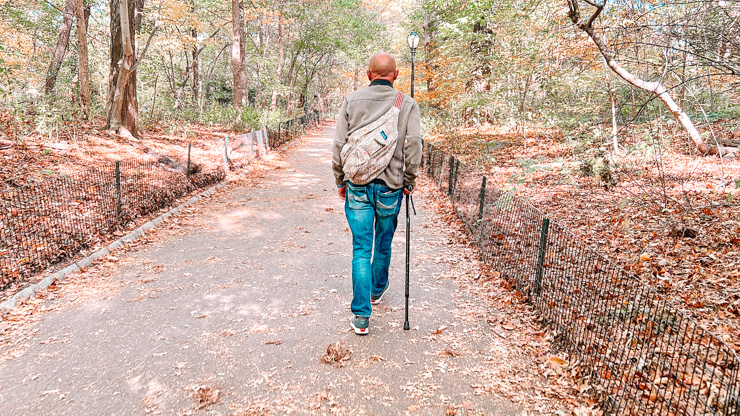
Tips for Traveling with Ankylosing Spondylitis
For people with Ankylosing Spondylitis (AS), travel can be a difficult but rewarding experience. AS is a form of arthritis that primarily affects the spine and other joints in the body. This can make activities like packing, driving, and sitting for long periods of time quite painful. However, with careful planning, you can make your travels as comfortable as possible. Here are a few tips to help you get started:
Get a medical checkup before you go. This will help ensure that you are healthy enough to travel and that your AS is under control. You may also want to get a letter from your doctor outlining your condition and any medications you are taking. This can be helpful if you need to see a doctor while you are away from home. I always carry my rheumatologist’s business card with her contact information on it in my wallet.
- Pack light. Reduce the amount of luggage you need to carry by packing only the essentials. If possible, try to limit yourself to one carry-on bag and one personal item. This will make getting around much easier.
- Build in rest time. When planning your itinerary, be sure to include plenty of time for rest and relaxation. Overdoing it will only make your pain worse, so it’s important to pace yourself and take breaks when needed.
- Rent equipment ahead of time. If you need special equipment like a wheelchair or crutches, try to rent them ahead of time so you don’t have to deal with the hassle of lugging them around with you.
- Stay in comfortable accommodations. Book a hotel room that has ample space so you can move around easily, as well as all the amenities you need to stay comfortable (e.g., a kettle for making tea, a comfy bed).
- Be prepared for setbacks. Don’t let pain ruin your trip—have a backup plan for days when you’re not feeling up to exploring. That might mean staying in your hotel room and ordering room service or taking a taxi instead of walking everywhere. Whatever makes you more comfortable, do that!
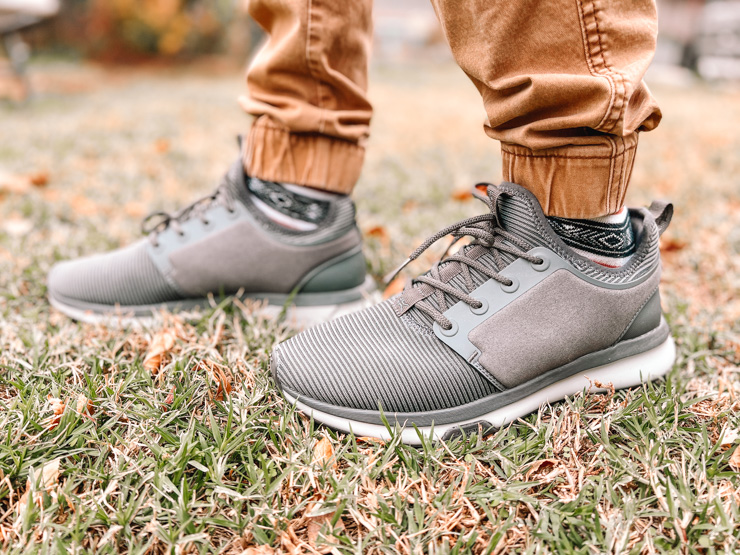
My Favorite Travel Products for Traveling with Ankylosing Spondylitis
When I was first diagnosed with ankylosing spondylitis, I was worried that my traveling days were behind me. I could no longer pack light and travel on a whim like I used to. Instead, I had to be more strategic about the way I packed and the types of products I brought with me on trips.
I’ve slowly but surely been able to put together a kit of go-to travel items. These are items that make my life with AS just a little bit easier when I’m on the road. Today, I want to share my top picks in the hopes that they’ll make your travels a little easier, too.
Comfortable Shoes:
This is something that took me awhile to find. I have tried a lot brands of shoes and I have found a couple of brands that work great for me. Hey Dudes are super comfortable and light weight. Hey Dudes are my go to for my daily shoe choice. They are light weight and after I put my insoles in them they are perfect. Another great things is that they are loose enough that when my feet swell they don’t get tight. Plus they are tight enough that they don’t flop around on my foot when my feet aren’t swollen!
Now if I’m going to be walking a lot or going hiking I will grab my Kuru‘s. These are the only shoes I have found that I can wear if I’m going to be on my feet all day long. The foot bed is wide enough so when my feet swell there is room. But not so much room that they are loose until then. They have several different colors and styles so you can find something for any occasion!
I also replace the insoles that come with the shoes with some that I got at a local shoe store. They have machine that maps the bottom of your foot to match you with the best insole for you. For me this takes a great pair of shoes and makes them perfect!
Heating Pad:
Anyone who suffers from arthritis knows that pain can strike at any time, making it difficult to enjoy even the simplest activities. Traveling can be especially challenging, as trying to find a comfortable position in a cramped car or airplane seat can aggravate existing pain. However, there is hope for relief. A cordless heating pad can provide much-needed relief while on the go. These small, portable pads can be easily slipped into a purse or backpack, and they provide welcome relief when pain strikes. Best of all, they can be used anywhere, whether you’re sitting in traffic or taking a long flight. So if you’re looking for a way to manage your arthritis pain while traveling, consider investing in a cordless heating pad.
CBD Roll On:
CBD Roll On is a topical application that can help to relieve pain and inflammation. For people with Ankylosing spondylitis, CBD Roll On can be a helpful tool for managing pain and inflammation during travel. The roll on applicator makes it easy to apply the CBD directly to the affected area, and the small size makes it easy to pack in a carry-on bag. In addition, CBD Roll On is non-addictive and does not interact with other medications, making it a safe option for people with Ankylosing spondylitis. If you are considering using CBD Roll On for traveling with Ankylosing spondylitis, talk to your doctor first to ensure that it is safe for you. Just make sure to check if CBD is legal where you are traveling to.
Essential Oils:
Essential oils are concentrated plant extracts that are thought to have therapeutic benefits. A study published in the journal Frontiers in Pediatrics found that peppermint oil was effective in reducing pain and inflammation in children with Ankylosing spondylitis. Lavender oil has also been shown to have anti-inflammatory properties, and it is commonly used to relieve stress and promote relaxation. Chamomile oil may also be helpful in reducing symptoms of Ankylosing spondylitis.
It is important to speak with a healthcare provider before using essential oils, as they can interact with certain medications. There are also some anecdotal reports of people with ankylosing spondylitis finding relief from using other essential oils, such as eucalyptus oil and ginger oil. While more research is needed to confirm the efficacy of essential oils for ankylosing spondylitis, they may be worth trying for those who are looking for a natural way to ease their symptoms. We have found that essentials oils have helped our family tremendously. If you like to ask me more questions about essential oils feel free to contact me at: [email protected] .
Ankylosing Spondylitis can be a difficult condition to manage, but it doesn’t have to stop you from enjoying life—including traveling! With careful planning and preparation, you can make your next trip one to remember (for all the right reasons).
FOLLOW US ON SOCIAL MEDIA
- Facebook Group
- Explore Oklahoma Facebook Group
- TikTok
- Hot Deals Group
- Recipe Group
- Homesteading Facebook Group
- Don’t forget to invite your friend’s to our Facebook groups! We would also love to see your vacation pictures!





